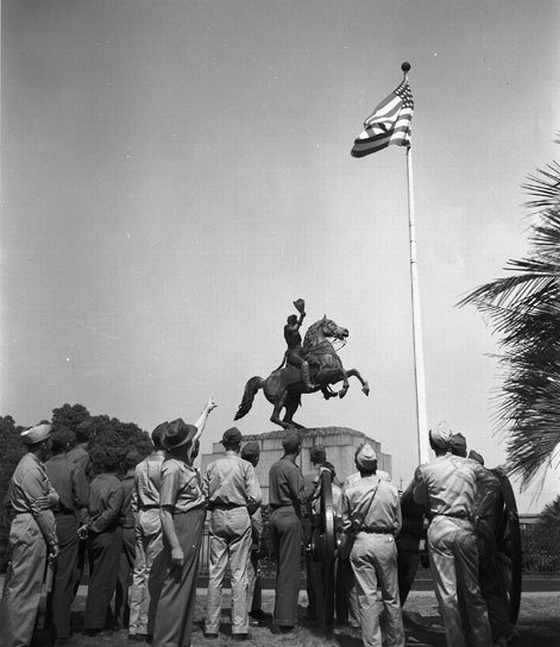|
Today in New Orleans History |
|
|
May 26


 A most appropriate photograph to share on Memorial Day, this one from the New Orleans Public Library
captures soldiers from the various camps in Louisiana and Mississippi who came to New Orleans for brief periods of weekend
leaves and are shown around the city by guides supplied by the WPA recreation division. Here the WPA guide is in Jackson Square
with a group of military tourists on May 26, 1941.  

To receive an update for each day in New Orleans
history, join our facebook page
- Today in New Orleans History
Tweet
New Orleans native Lee Harvey Oswald wrote to the New York City headquarters of the pro-Castro Fair
Play for Cuba Committee on May 26, 1963, proposing to rent "...a small office at my own expense for
the purpose of forming a FPCC branch here in New Orleans." Three days later, the FPCC responded to Oswald's letter
advising against opening a New Orleans office "at least not ... at the very beginning." In a follow-up letter,
Oswald replied, "Against your advice, I have decided to take an office from the very beginning." As the sole
member of the New Orleans chapter of the Fair Play for Cuba Committee, Oswald ordered the following items from a local printer:
500 application forms, 300 membership cards, and 1,000 leaflets with the heading, "Hands Off Cuba." According
to Lee Oswald's wife Marina, Lee told her to sign the name "A.J. Hidell" as chapter president on his membership
card. (WIKI)
|
|
|

To receive an update for each day in New Orleans history,
join our facebook page - Today in New
Orleans History.
Analytics |


